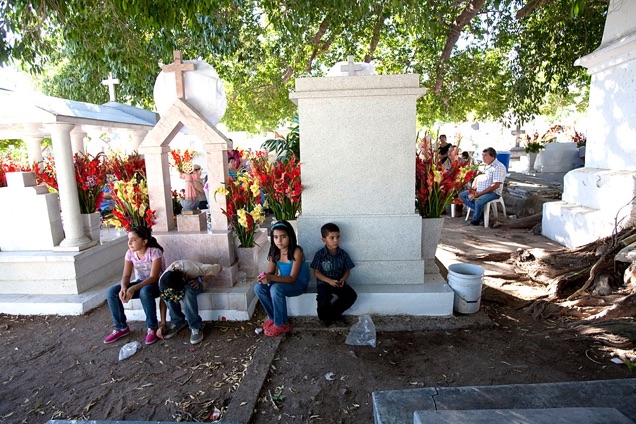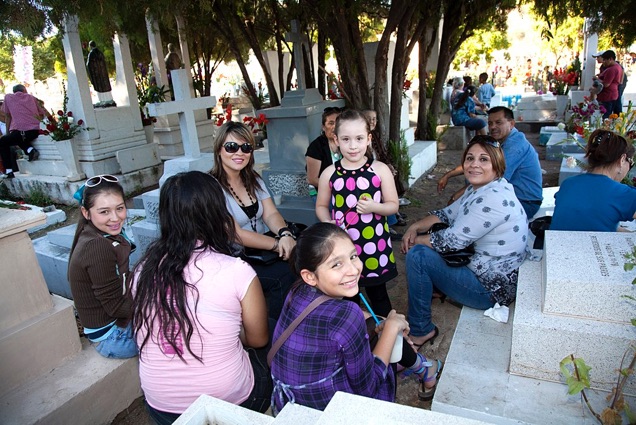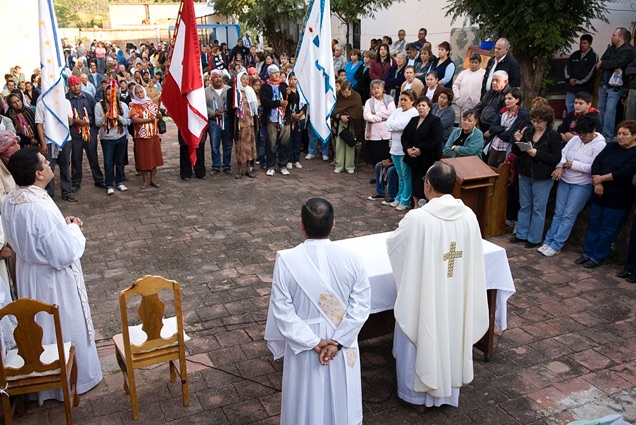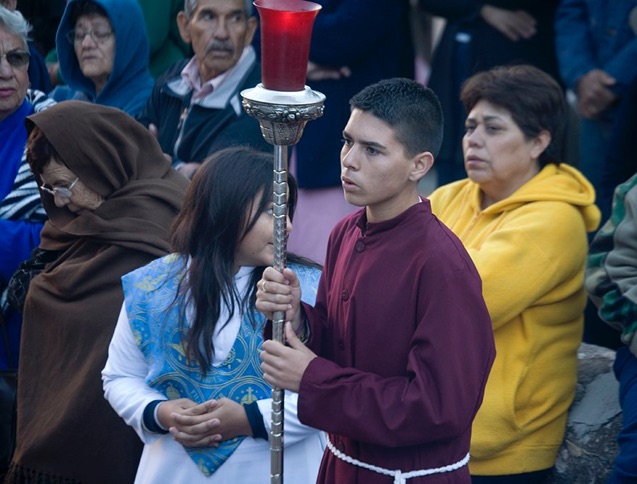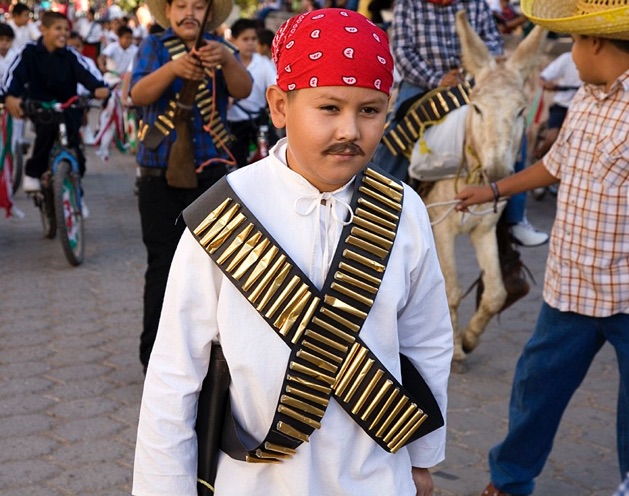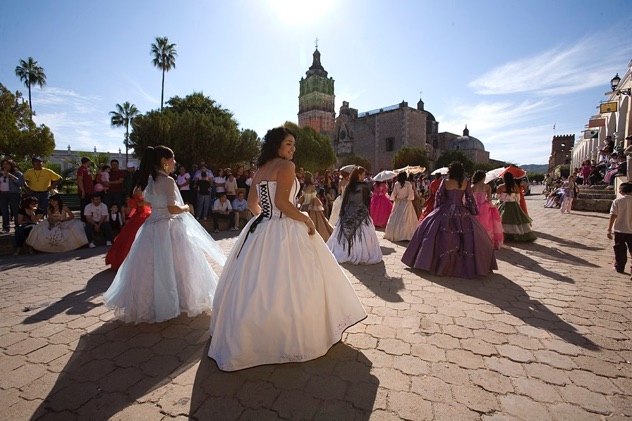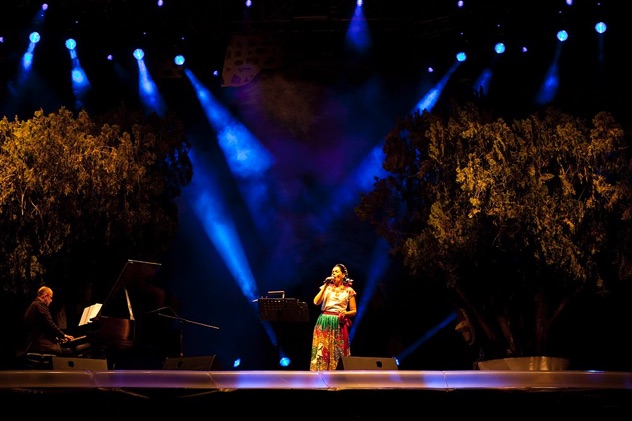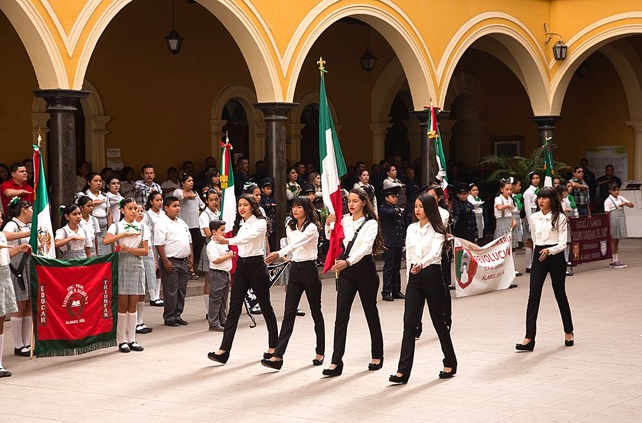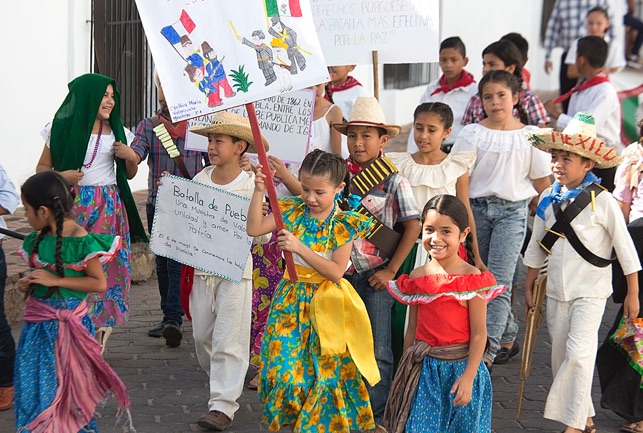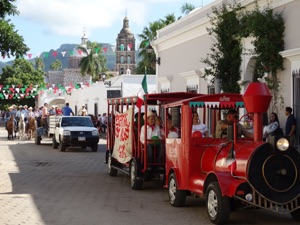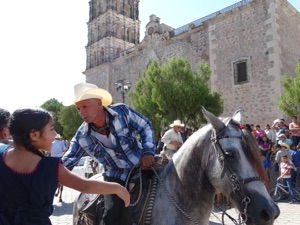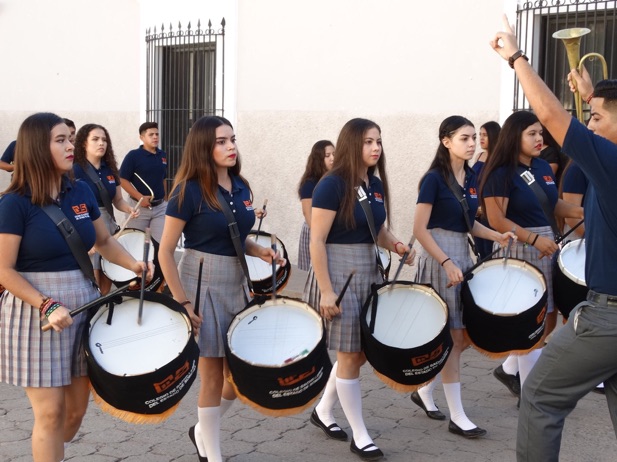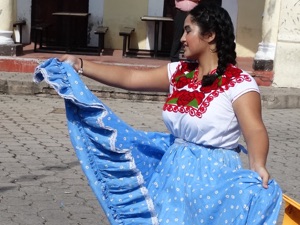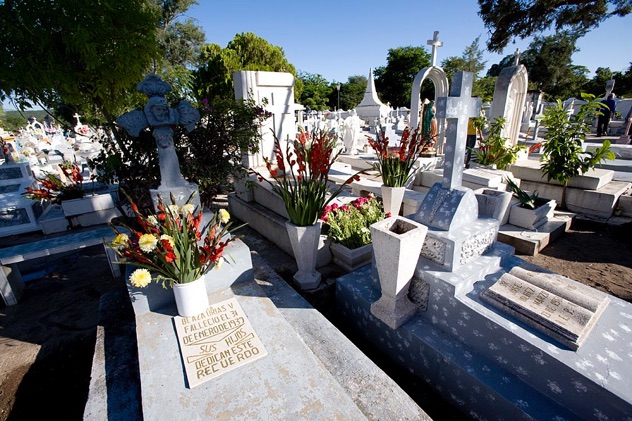From the last few days of October through the first days of November, activity in Álamos and other cities in Southern Sonora is centered around the cemetery. Since crowds will be gathering on November 1 and 2, city workers improve roads leading to the cemetery, provide for parking, and clean the cemetery area to include putting fresh paint on the outside walls.
On October 31, vendors gather at the Plaza Alameda in Álamos selling flowers and other decorations for the graves. Toys and candy in the form of macabre symbols such as skeletons, coffins, and the personification of death (La Muerta) can also be purchased from street vendors. Families bring spades, brooms, and cleaning materials to the graves of their antepasados, and many families gather at night to celebrate the lives of their departed family members and pray for their entrance into heaven. There is often music and singing, and beer and other spirits might also be a part of the celebration.
November 1 is often called el Día de los Angelitos since it is believed the souls of children return to the living world on November 1, while the souls of adults return on November 2 (el Día de los Muertos). The commemoration ends with a 4 p.m. Mass Nov. 2 in the Álamos panteón, and a video of this celetration can be viewed on this website under the heading “Día de los Muertos.”




